Popular games published by company Fujitsu Interactive
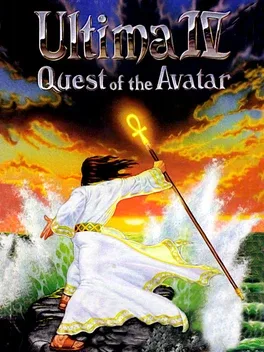
Following the defeat of the evil triad in the previous three Ultima games, the world of Sosaria changed beyond recognition: continents rose and sank, and new cities were built, heralding the advent of a different civilization. Unified by the reign of the benevolent monarch Lord British, the new world was renamed Britannia. Lord British wished to base people's well-being on the ethical principles of Truth, Love, and Courage, proclaiming the Eight Virtues (Honesty, Compassion, Valor, Justice, Sacrifice, Honor, Spirituality, and Humility) as the ideal everyone should strive for. The person who could accomplish full understanding and realization of these virtues would serve as a spiritual leader and a moral example for the inhabitants of Britannia; he alone would be able to obtain holy artifacts, descend into the Stygian Abyss, and access the Codex of Ultimate Wisdom. This person is the Avatar. The fourth game in the Ultima series features an improved game engine, with color graphics and enhanced character interaction: the player can have conversations with non-playable characters by typing names of various topics. However, the main difference between Ultima IV and its predecessors in the series (as well as other role-playing games) lies in the game's objectives and the ways to fulfill them. Instead of building up a character by any means possible in order to face a villain in the end of the game, in Ultima IV the player is trying to become the Avatar, a role model for people. This means upholding the Eight Virtues, basically trying to become a better person. Making morally conscious decisions and helping other people is not done expecting a material reward, but because it is the actual goal of the game and the main focus of its gameplay. The game frowns on behavior typical of most other RPGs, such as backstabbing fleeing enemies or picking up everything that isn't nailed down even if it does not belong to the protagonist. This different approach established the game's reputation as the first "true" Ultima, influencing the design philosophy of later installments and the overall spirit of the series. Character creation is done by choosing responses to morally ambiguous questions. Each of the Eight Virtues corresponds to a character class; by determining the player's personal priorities in the virtues, the game assigns a class and a starting location for the Avatar. After emerging in Britannia, the player is free to explore it in various ways (on foot, moongate teleportation, on horseback, by ship, etc.). Certain items must be collected in any order to enter the Stygian Abyss and complete the game. The Avatar also has to reach the highest level in all virtues. This is achieved by various means: donating blood increases Sacrifice, not fleeing from combat increases Valor, etc. The process, however, is not irreversible: should the Avatar overpay a blind seller, he gains Compassion points; should he, on the other hand, cheat the seller by underpaying, his level in several virtues would decrease. These unorthodox features of the game co-exist with plenty of traditional RPG elements, such as dungeons to explore and hostile monsters to kill. Enemies are encountered on the world map as well as in dungeons; combat takes place on separate top-down screens, allowing player-controlled and enemy parties freely move on them. Characters accumulate experience points and level up, gaining higher amount of hit points and access to stronger magic spells. Like in the previous installments of the series, world map, town exploration and combat are presented from a top-down view, while the dungeons are pseudo-3D and are explored from first-person perspective. Ultima IV also introduces several new gameplay features to the series and role-playing games in general. A number of initially non-playable characters living in various areas of the game world are able to to join the party and fight alongside the hero, replacing traditional player-generated characters or mercenaries and adventurers available only in special locations. Additional new elements include buying and combining reagents in order to cast spells, puzzle rooms in dungeons, and others. The FM Towns version, while identical to the others in gameplay, introduces upgraded graphics similar to those used in next installment of the series.
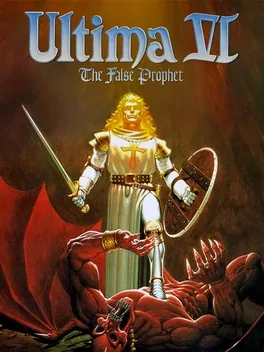
Ultima VI sees the player return to Britannia, at war with a race of gargoyles from another land, struggling to stop a prophecy from ending their race. The player must help defend Britannia against these gargoyles, and ultimately discover the secrets about both lands and its peoples.

SimCity, later renamed SimCity Classic, is a city-building simulation video game, first released on February 2, 1989, and designed by Will Wright for the Macintosh computer. SimCity was Maxis's second product, which has since been ported into various personal computers and game consoles, and spawned several sequels including SimCity 2000 in 1993, SimCity 3000 in 1999, SimCity 4 in 2003, SimCity DS, SimCity Societies in 2007, and SimCity in 2013. Until the release of The Sims in 2000, the SimCity series was the best-selling line of computer games made by Maxis.
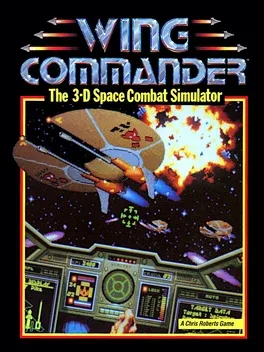
Gameplay consists of completing successive missions and overall cockpit performance affects gameplay: going above and beyond the call of duty results in medals, promotions in rank are awarded at regular intervals, and success or failure on certain critical missions decides the player's plot progress, "winning" or "losing".

After a century of relative peace, the Avatar of Virtue is summoned back to the medieval kingdom of Britannia to deal with a new threat: the usurper Lord Blackthorn, a formerly honorable nobleman who has been corrupted by strange new creatures called the Shadowlords. After the recent disappearance of the true king, Lord British, the realm has fallen under martial law. Blackthorn now rules the land by brutally enforcing the eight Virtues upon the people of Britannia - corrupting their meaning in the process. The Avatar must gather together his former companions, now made outlaws by Blackthorn's regime, and venture forth to defeat the vile Shadowlords and recover the true king from the shadowy depths of the Underworld.

Europe, 1938. The Lost Ark was just a warm up! Now Adolph Hitler is after the most powerful talisman of all- the Holy Grail. A few brave men stand in his way. Fortunately, one of them is Indiana Jones. And this time, he has his dad with him. The bad guys are in your face all the way- Nazis, mercenaries, traitors, spies. Not to mention everything the Luftwaffe can throw at you.. Can you handle the heat? If you can, you just might earn a higher I.Q. (Indy Quotient) than the man with the whip and the hat. Puzzles, action, adventure.
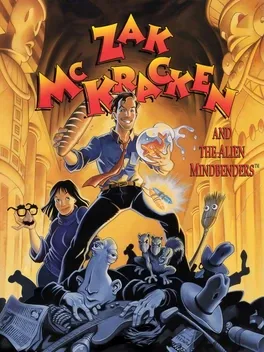
Zak McKracken is a tabloid reporter (and not a very good one at that). After having a psychedelic dream one day, Zak realizes that something is wrong -- space aliens are dumbifying the general public through the telephone system. Zak must stop this, but he can't do it alone. After finding a strange crystal, Zak manages to get the help of the anthropologist Annie and her friends, Melissa and Leslie. The four unlikely heroes must now figure out a way to destroy the dumbifying devices and save the Earth. Zak McKracken and the Alien Mindbenders is a third-person puzzle-solving adventure similar in gameplay to Lucasfilm's breakthrough title Maniac Mansion. The player chooses verb commands (Open, Pick Up, Give, etc.; there are no Look or Talk commands) to interact with the game world. The game features up to four controllable protagonists; it is possible to switch between them at any time after they have been introduced, and also exchange inventory items if the characters are in the same location. The game can be described as a "globe-trotting" adventure, since the heroes are required to travel to different exotic countries and even leave the Earth for a while in order to complete it. Some of the puzzles are optional or can be solved in different ways. The FM Towns version has VGA graphics with 256 colors and higher-quality music and sound effects.
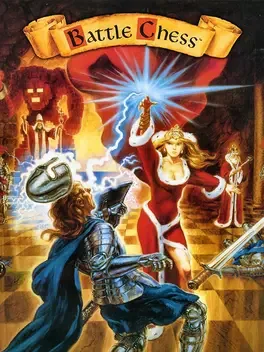
Battle Chess was developed by Interplay as their first project after severing ties with Electronic Arts. They designed it for the Amiga in 1988, and it was released on the majority of the other systems in the late 1980s and early 1990s as well. It was widely successful, and resulted in two follow-ups, many copy-cat games, and a remake for Steam on PC. The only significant criticism the game received was the weak chess AI, as it was not until the mid 1990s that chess ai began to consistently win against strong opponents.
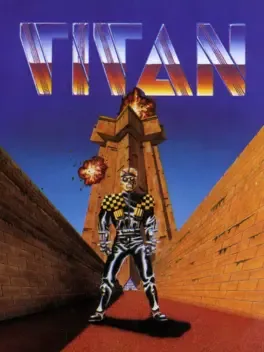
Titan takes the Breakout concept and adds another dimension by allowing the object the player controls to be able to move on the Y-axis in addition to the old X-axis. The display will follow the small square which the player controls as it moves on a map where there are objects whom your goal is to make a ball hit. The player controls a small rectangle only slightly larger than the size of the ball itself and in addition to hitting the "bricks" to destroy them has to keep the ball away from dangerous hazards which will kill the ball if it hits.

Teo 64 was a pet simulation video game, very similar to “Hey You Pikachu!”, the Nintendo title where the player could interact with the Pokemon talking to him through a microphone connected to the N64. In this game, however, the protagonist was a strange cross between a dolphin and a bird. Speaking with the animal it was possible to became his friend, feed him and explore the world. For many it will be a shocking news, but “Teo” is not the name of the dolphin / bird, but of the planet where he is living. Known under the title “FinFin on Teo, the Magic Planet”, the virtual puppy FinFin made his first appearance on a PC game released in 1996. According to the producers, the 64DD version was not a porting, but a completely new game. The development of Teo for 64DD was probably stopped because of the failure of the Disk Drive, and it is likely that we will never know how different the 64DD game was supposed to be.
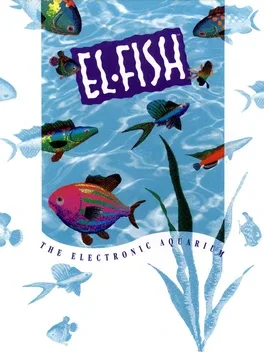
A fish and aquarium simulator, El-Fish lets your catch, breed, evolve, and even mutate tropical fish, then render them and let them loose in an aquarium that you design. Except for a few pre-canned graphics and animations, all fish, plants, and even backdrops and floor gravel in El-Fish are generated by the user using genetic algorithms that simulate real life in both appearance and movement.

Fin Fin is a virtual pet similar to Tamagotchi. The special feature of the simulation is speech recognition with a accompanying microphone. Of course it doesn't really understand what the player is saying but it reacts to the mode of speaking - a friendly tone makes it happy and loud or hectic speeches makes it sad. Sometimes it speaks back and a "conversation" occurs. Over time it learns to distinguish the player's voice from others. Like other virtual pets the Fin Fin needs to eat and sleep. The game is set in a virtual world where the Fin Fin can meet other animals (the player can't interact with those). The pet either plays with them or is scared which affects its mood. A happy Fin Fin rewards the player by singing a song or performing stunts.

Ishido: The Way of Stones is a puzzle video game released in 1990 by Accolade and developed by Publishing International. It was designed by Michael Feinberg and programmed by Ian Gilman and Michael Sandige. Producer was Brad Fregger, and Brodie Lockard (the designer of the Shanghai computer game) contributed with graphics. "One misty spring morning in 1989, in the remote mountains of China's Han Shan province, a Mendicant monk of the Northern School of the White Crane branch of Taoism, walked silently out through the front gates of the Heavenly Peak Temple The monk carried a stone board, a set of seventy-two carved stone pieces, and an ancient scroll inscribed with brush and ink in elegant calligraphic script. He also carried with him a secret which had lain cloistered and hidden for thousands of years."